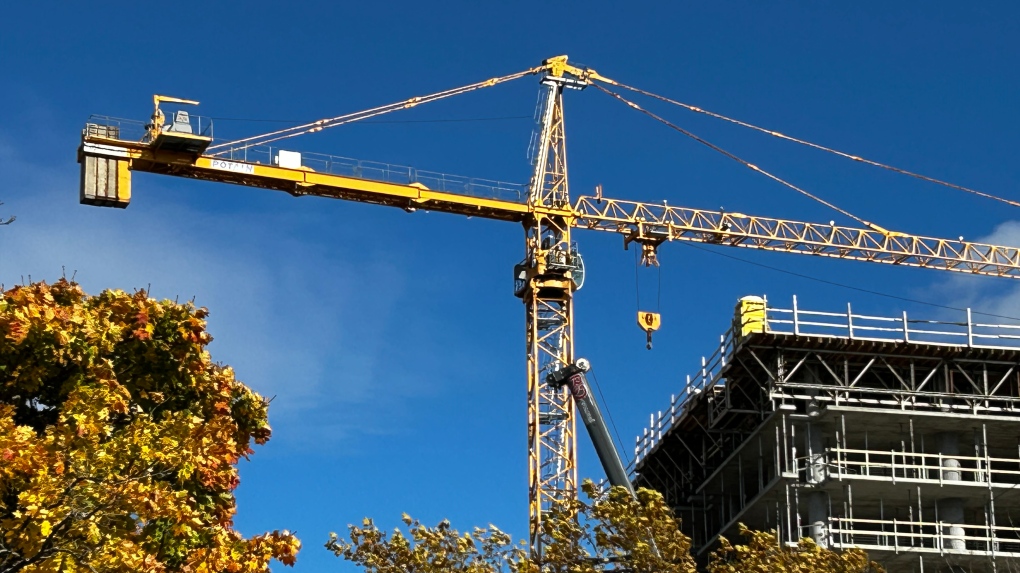What the Macdonald Bridge closure chaos revealed about the state of Halifax traffic
A professor at Dalhousie University says Thursday’s closure of the Macdonald Bridge in Halifax is concerning, especially if the peninsula was ever under a mandatory evacuation order.
“We are stuck,” said Ahsan Habib, director of the Dalhousie University School of Planning. “Our last simulation run showed it takes, only for the peninsula – assuming there is no congestion, no incident – it takes 24 hours to evacuate the peninsula. It’s unacceptable.”
Habib says Halifax’s infrastructure is 10 years behind – making closures to one of the main routes in and out of the city almost impossible to get around in a timely manner.
“I think there are projects in the pipeline. We need to prioritize the ones that are immediate, particularly for this type of situation,” said Habib.
The Macdonald Bridge, which connects Halifax and Dartmouth, N.S., closed Thursday afternoon due to safety concerns over a damaged crane at a nearby construction site on Wyse Road.
 A crane at a construction site in Dartmouth, N.S., that prompted the closure of the Macdonald Bridge on Nov. 7, 2024 is pictured. (CTV Atlantic/Jonathan MacInnis)
A crane at a construction site in Dartmouth, N.S., that prompted the closure of the Macdonald Bridge on Nov. 7, 2024 is pictured. (CTV Atlantic/Jonathan MacInnis)
That closure caused major traffic delays and congestion throughout the Halifax Regional Municipality during rush hour. Some people online said their 30-minute drive turned into two-plus hours.
The situation also forced about 20 people to evacuate from 12 homes in Dartmouth.
Around 5:30 a.m. Friday, Halifax Harbour Bridges confirmed the bridge had reopened after the crane was safely secured.
About six hours later, the evacuation order in the area was also lifted, allowing residents and businesses to return.
Habib points out the current levels of traffic congestion could easily get worse, considering 16 per cent of the population is still working from home full-time.
“Thirty-five per cent are hybrid workers. So, if you account them and bring them into downtown, their workplaces, I’m expecting these types of gridlocks might be more frequent,” he said.
‘We are overdue on delivering bus-rapid transit’
He says utilizing the harbour to move people around the municipality could help with traffic problems. However, there’s still much work and planning that would need to be done to make that become a reality.
“It requires the ferry terminal, and multiple major infrastructure developments, as well as effectively designing that approach to those terminals so that our 18-minute ferry ride doesn’t add 20 minutes to just park or get to transit,” said Habib.
Habib says the only way to improve congestion problems in the Halifax area is by reducing the amount of vehicles on the road.
“The way we could do that is investing on reliable public transit. I’m talking about more than buses. It needs to be bus-rapid transit. The construction, time, or need is much lower than many other expensive alternatives,” he said.
“But we are overdue on delivering bus-rapid transit … We need a dedicated service and we don’t need many of them. We need some strategic corridor of bus-rapid transit.”
For more Nova Scotia news, visit our dedicated provincial page.
CTVNews.ca Top Stories

Police locate labyrinth of tunnels connecting tents to generator in Hamilton encampment
Hamilton police say that they discovered a series of “man-made holes and tunnels” during a patrol of a downtown encampment earlier this week.
BREAKING George Kresge Jr., who wowed talk show audiences as the The Amazing Kreskin, dies at age 89
George Joseph Kresge Jr., who was known to generations of TV watchers as the mesmerizing entertainer and mentalist The Amazing Kreskin, has died at age 89.
Police identify murder victim whose skull was found in Ontario river more than three decades ago
Police have identified a man whose skull was found almost 40 years ago in a Peterborough-area river.
Canada Post strike: Talks deadlocked as sides clash on wages
Negotiations between Canada Post and the union representing its workers appear to be in a deadlock as the two sides remain far apart on wages and other issues.
Certain foods may disrupt your body's fight against cancer cells, study says
The food you eat may be affecting your body’s ability to fight cancer cells in the colon, according to a new study.
Poilievre's Conservatives still in majority territory: Nanos seat projections
The Liberals' promise of a temporary GST break and $250 rebate cheques haven't benefited Prime Minister Justin Trudeau and his minority government when it comes to public support, according to Nanos Research data.
Meta working on resolving Facebook, Instagram outage
Meta users are experiencing a widespread outage, including applications like WhatsApp, Instagram, Facebook and Facebook Messenger, according to third-party website Downdetector.com. Meta acknowledged the issue and is working on resolving the outage.
Bank of Canada drops key interest rate to 3.25%, Trump tariff threat 'new source of uncertainty'
Canada's central bank has cut its key rate for the fifth consecutive time – now sitting at 3.25 per cent – as the country's economy grows at a slower rate than projected.
'Baseball-sized hail': Toronto man owes car rental company $18K after hailstorm
A Toronto man is on the hook for about $18,000 after a car he rented over the summer was pelted by baseball-sized hail.































